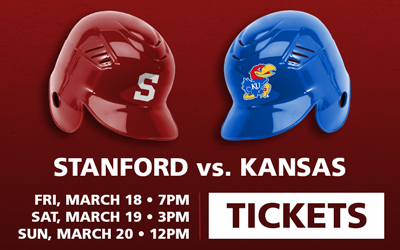STANFORD, Calif. - Stanford and Arizona have met 28 times in football, but never in a more unusual setting than the so-called “Coca-Cola Bowl” in Tokyo, Japan, in 1986.
The game was scheduled for Tucson, Arizona, but each school was willing to travel 10,000 miles for $150,000 plus expenses to conclude the regular season. Tokyo hosted college games from 1977-93 under the headings of the Mirage and Coca-Cola bowls.
Stanford brought a travel party of 500 for the game at Memorial Stadium, the site of the 1964 Olympic Games. The teams already earned bowl bids. Stanford (7-3) was headed to the Gator and Arizona (8-2) to the Aloha.
The teams approached the game differently.
“Arizona’s players were spotted by several writers in some of the more disreputable sections of Tokyo long after the Stanford players had called it an evening,” wrote The Stanford Daily’s John Lis. Of course, what were the writers doing there?
“What are we supposed to do?” Arizona coach Larry Smith said. “You come to Japan for once in your lifetime and stay in a hotel? That doesn't make sense.”
To adjust to the 17-hour time difference, Stanford’s first curfew was 7 p.m., with a 4 a.m. wakeup the next morning. Gradually, curfews were pushed back to 11.
“We hadn’t gone out any night we’ve been here,” quarterback Greg Ennis said.
The Cardinal practiced at a baseball stadium on an artificial surface with all the cushion of a pool table, wrote Lis. Yard lines were taped to the outfield.
At the 80,000-capacity Olympic stadium, the locker rooms were so small only 20 could comfortably fit. A year earlier, USC’s players had showered at their hotel, an hour away.
On gameday, the back half of each end zone doubled as the rubberized track that encircled the field. The chalk lines were drawn so faintly that they could barely be seen, especially by fans and the ESPN television audience. When an Arizona punt returner was tackled in the end zone for a safety, he didn’t know he was in the end zone in the first place.
There was some concern that the fans would not know the rules or be enthusiastic enough, so 60,000 red-and-white pompoms were distributed and cheerleaders flashed signs -- in Japanese -- around the stadium instructing the crowd when to cheer. The crowd responded even when the signs were held upside down.
Perhaps the biggest draw, even more than the game, was the entertainment. The Stanford and Arizona bands, dance teams, and Arizona baton twirlers, teamed up to play a 30-minute pregame show, 18-minute halftime show, and another 30-minute set after the game. Coca-Cola also paid for the Wheat Street Baptist Church choir from the company’s base in Atlanta, to bring some gospel music to the audience.
This being Japan and far away from those who may care, the bands played throughout the game, even during game action. But the players didn’t complain. “It really wasn't a distraction,” Stanford cornerback Toi Cook said. “Maybe only when we came off the field for defensive meetings.”
The game -- played before 55,000 with a gametime temperature of 46 degrees -- took on a bizarre quality as well. There was a fumble on the opening kickoff, a fake field-goal for a touchdown, a fake punt, a blocked field-goal try, a safety, seven fumbles, five interceptions, and 150 yards in penalties.
Moments after Arizona took the lead on a field goal at the outset of the fourth quarter, Stanford’s Kevin Scott broke through on the ensuing kickoff, sidestepped the kicker and outran four Wildcats to the end zone to give Stanford a 22-17 lead it never relinquished.
Ennis, who replaced starter John Paye in the third quarter when Paye aggravated a shoulder injury, scored from one yard to extend the lead to 29-17. The Stanford defense gave up only one sustained touchdown drive, capped by a touchdown pass with 2:42 to play to make it 29-24.
Arizona got the ball back with 1:38 left, but Stanford’s Dave Wyman, who had 11 tackles, intercepted a pass to seal the victory.
“This was typical of the kind of play we’ve exhibited all year,” Stanford coach Jack Elway said. “We played hard and with intensity the entire football game.”
Brad Muster rushed 27 times for 108 yards and scored Stanford’s first touchdown, on a 21-yard run off-tackle to tie the game, 7-7. The total put him over 1,000 yards, becoming only the second Stanford player, after Darrin Nelso, to reach that season total.
Given the differences in game preparation, perhaps the result wasn’t surprising.
“Anybody who thinks that is a crock,” Arizona safety Chuck Cecil said. “Stanford has as much leisure time as we did.”
That certainly was true after the game was over.
“We came to play a football game,” Muster said. “Arizona was the first thing on our mind. Now, we’re going to party Tokyo-style -- like Arizona’s done all week.”











